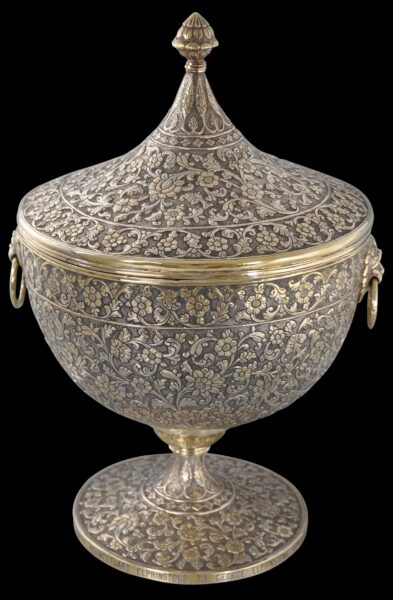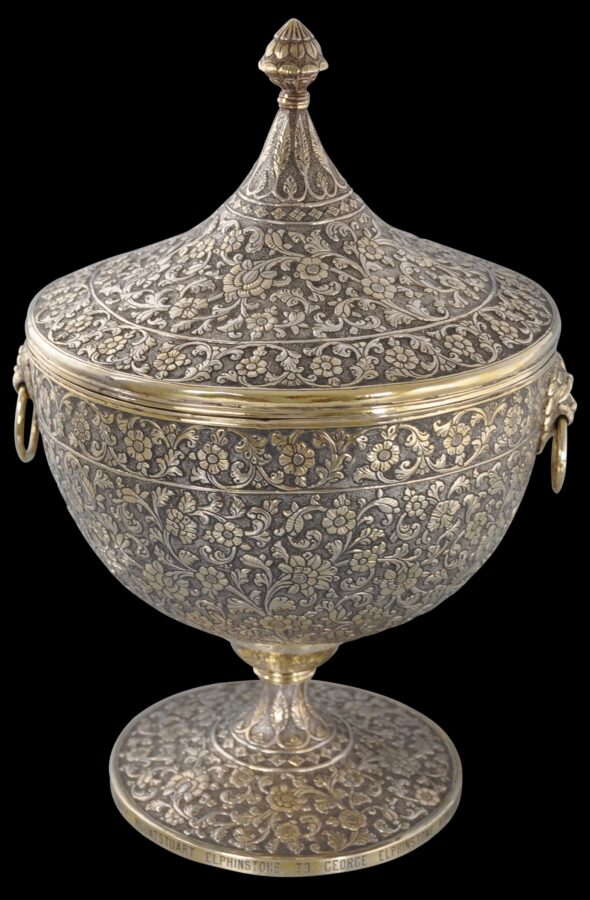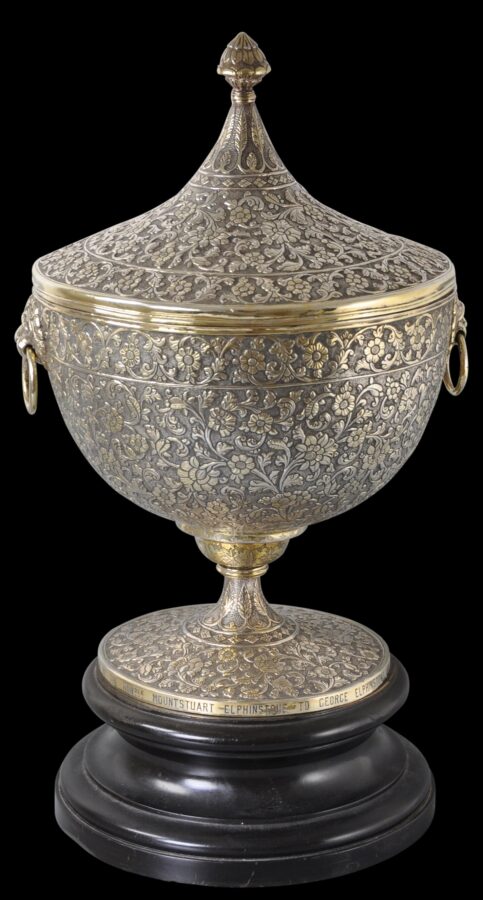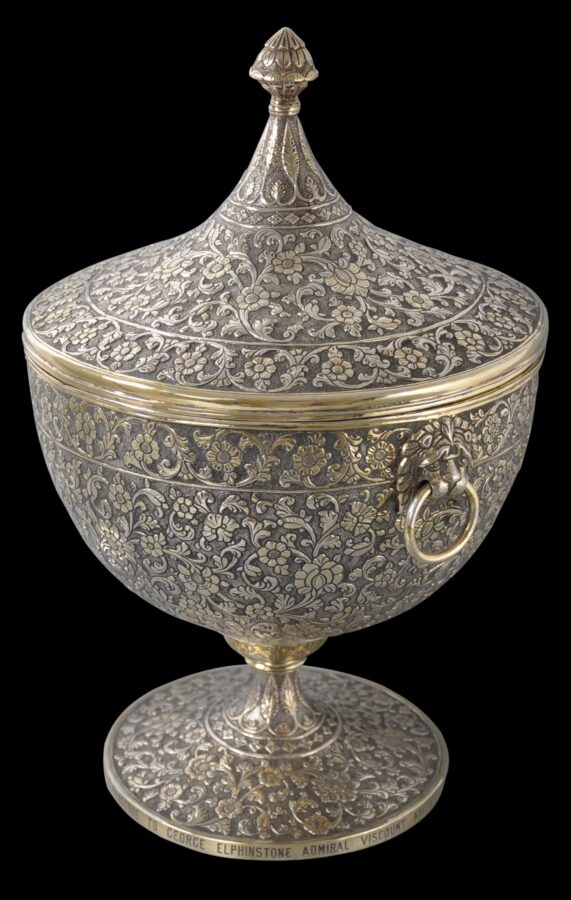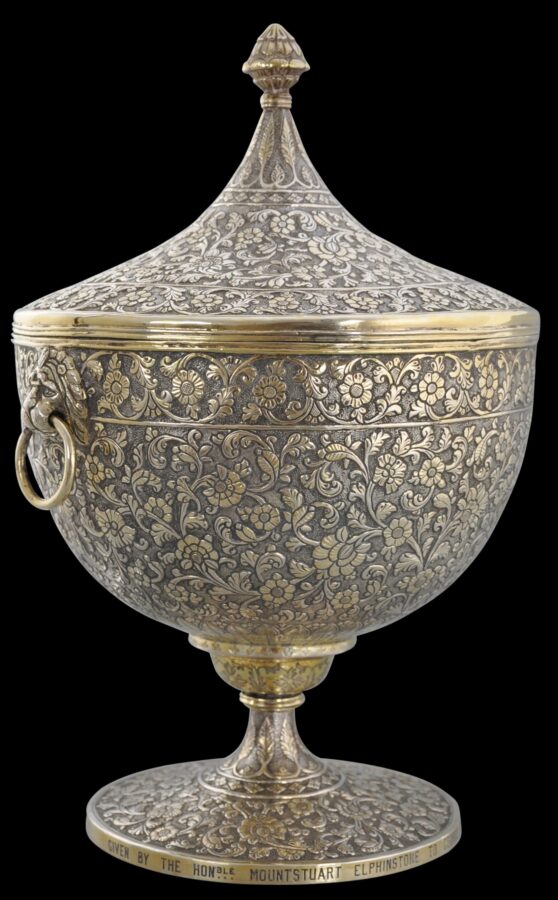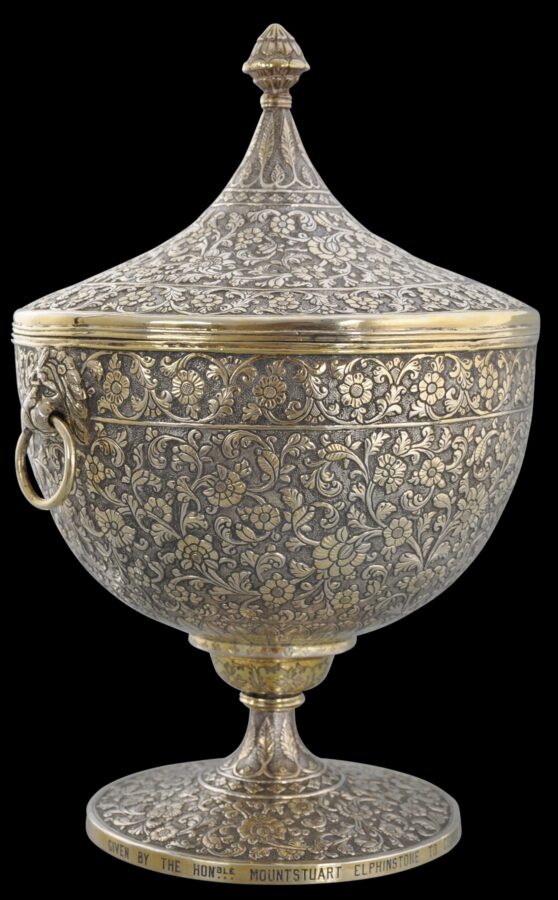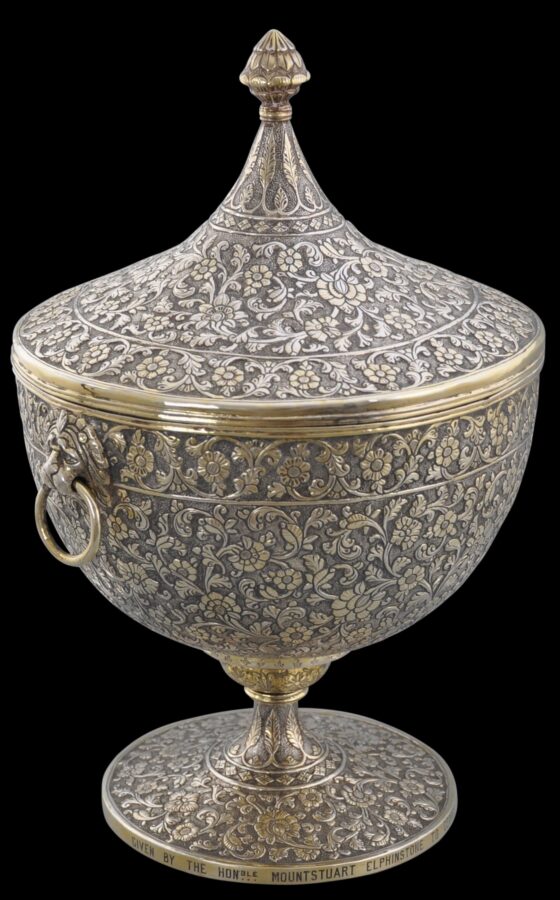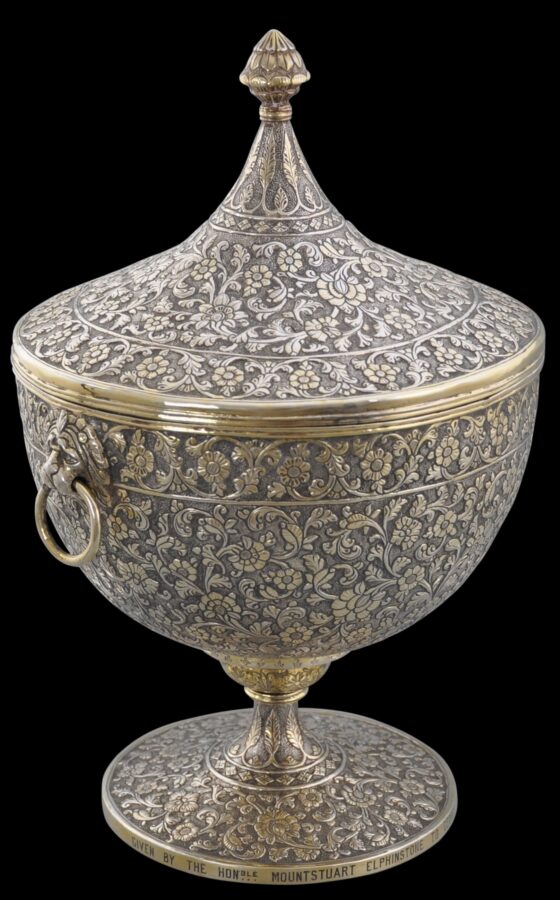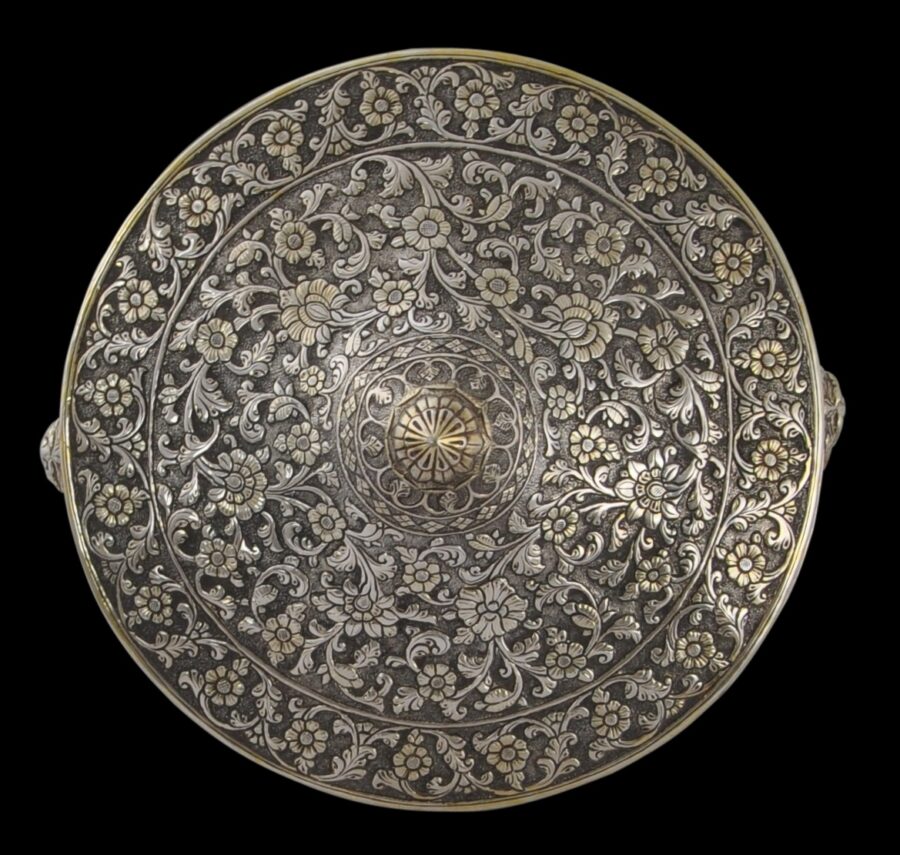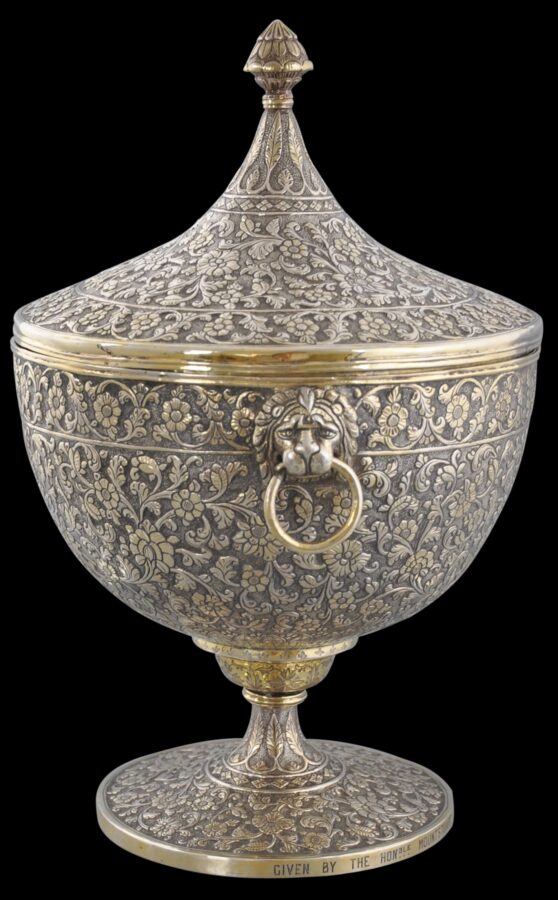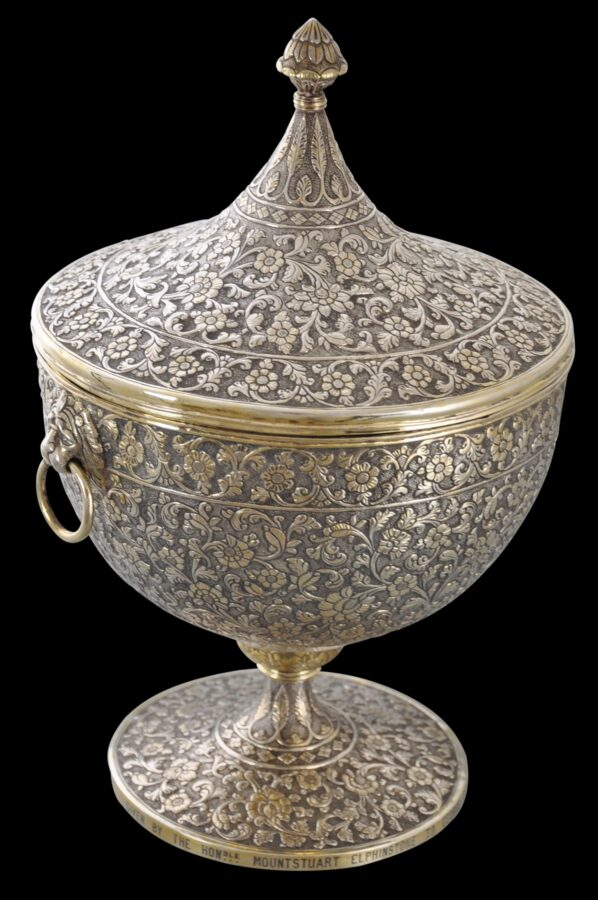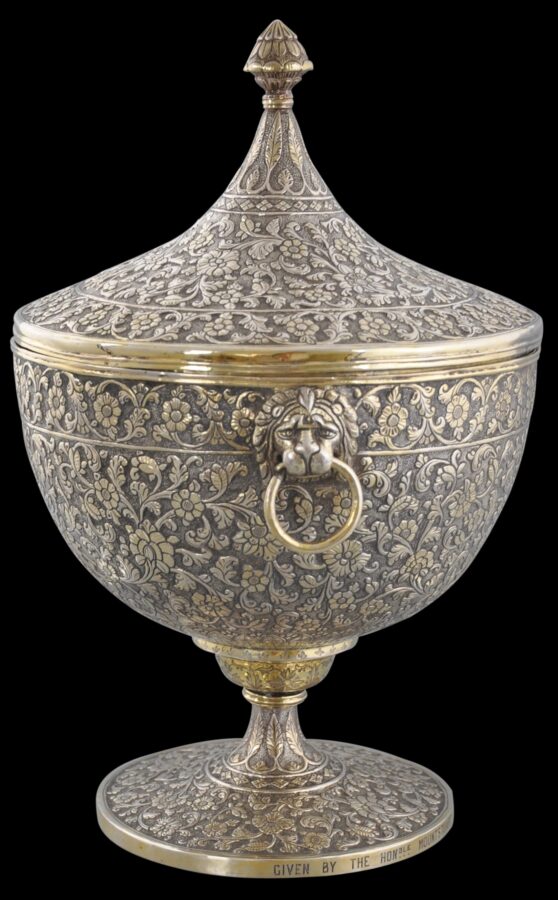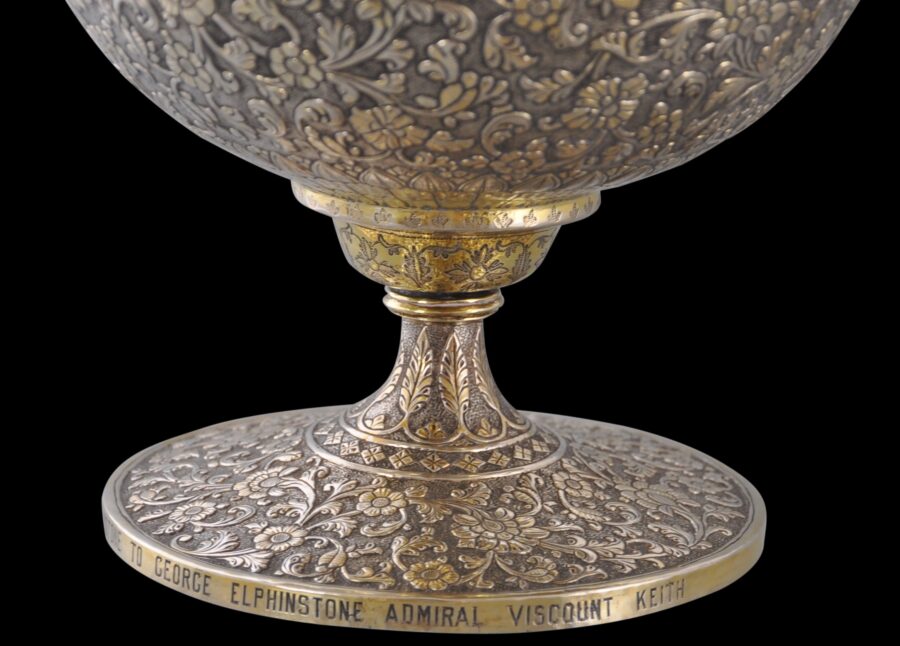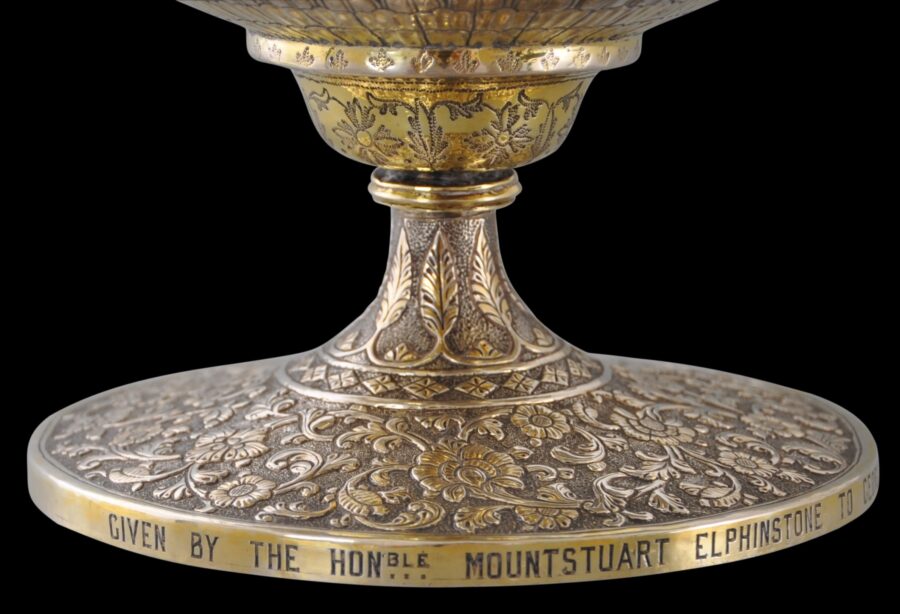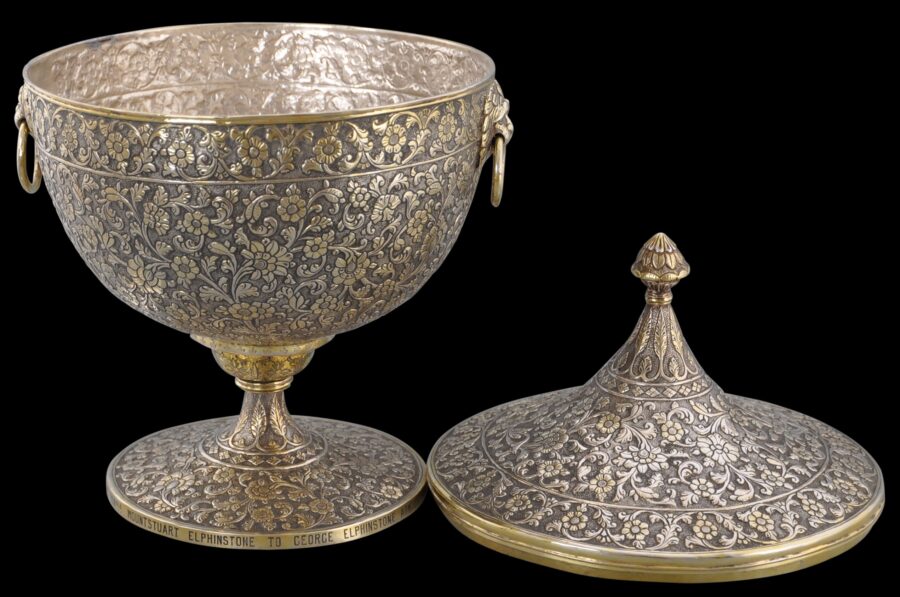This important example of colonial Indian silver is particularly early for such silverwork, and is one of the earliest datable examples of silverwork produced in colonial India that is not simply a facsimile of English of Scottish silver, but which incorporates a local and in this case Islamic, aesthetic.
It is not dated as such but has an important presentation inscription around the foot – from, and to, two important figures in British military and colonial history. The recipient died in 1823 so we know that the item predates this. He is addressed in the inscription as a Viscount, which he was made in 1814 – so we know the bowl was inscribed between 1814 and 1823, and dates to this or earlier. Possibly it was a gift to mark the recipient’s elevation to the viscountcy in 1814. This makes this item of colonial Indian silver particularly important because the motifs relate to later colonial India silver, most particularly that from Kutch. So this item of silver seems to anticipate this later style by at least sixty years.
This presentation vase comprises a flared foot, body and domed cover that rises to a prominent finial. Lion heads are on each side and to these are attached round handles. It is finely chased all over with floral scrollwork against a tooled background. It has also been gilded, which over time, has developed a very pleasing, soft hue. It is accompanied by a carved, round, ebonised wood stand which is probably contemporary with the piece (but the piece might look best without it – perhaps a matter of personal preference,)
The inscription around the foot reads: ‘Given by the Hon’ble Mountstuart Elphinstone to George Elphinstone Admiral Viscount Keith.’
Mountstuart Elphinstone and George Keith Elphinstone, 1st Viscount Keith GCB FRS (1746- 1823), both came from an illustrious, aristocratic Scottish family. Like many such Scottish families, various scions held positions with the East India Company and served in India. Often, sons were sent to India to amass wealth, sometimes to revive flagging family fortunes at home.
In his early years, George Elphinstone joined an East India Company voyage to China. (His brother William had joined the Company.) Later, he played an important role in the Napoleonic Wars, helping to defeat Napoleon’s navy, and on Napoleon’s surrender briefly was in charge of the deposed leader. He was made a Viscount in 1814.
Mountstuart Elphinstone (1779-1859) was the fourth son of the 11th Baron Elphinstone. Early on, he worked in the civil service of the East India Company. He arrived at Calcutta in 1796. He escaped massacre in Benares by the followers of the deposed Nawab of Awadh, Wazir Ali Khan, in 1999. In 1801 he was posted as the Assistant to the British Resident at the court of the Peshwa ruler Baji Rao II. In 1804, he was appointed British resident at Nagpur. In 1808 he was appointed the first British envoy to the court of Kabul, Afghanistan. Next, in 1811, he was made Resident at Pune. In 1819, he was appointed Lieutenant-Governor of Bombay, a post he held until 1827. He won praise as a benevolent administrator. He was also the author of books on India and Afghanistan.
The motifs on this presentation vase here are not unlike that on a salver illustrated in Dehejia (2008, p. 140). The salver is not marked and is attributed to Kutch, circa 1900. The work on the salver, like the work on the vase here, superficially is like Kutch work, but it is likely that the salver is not from Kutch and is much earlier.
The presentation vase is in excellent condition. It is a superb, early example of the Colonial Indian silver style that represented a fusion between Indian and European style and form.
References
Dehejia, V., Delight in Design: Indian Silver for the Raj, Mapin, 2008.


